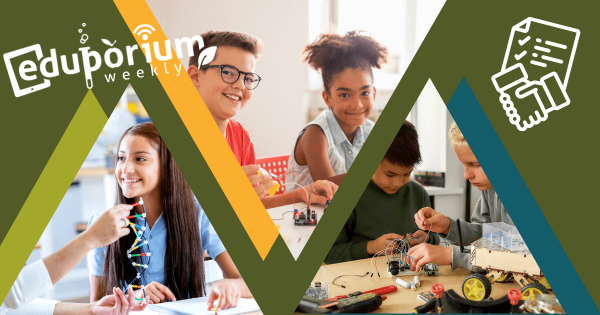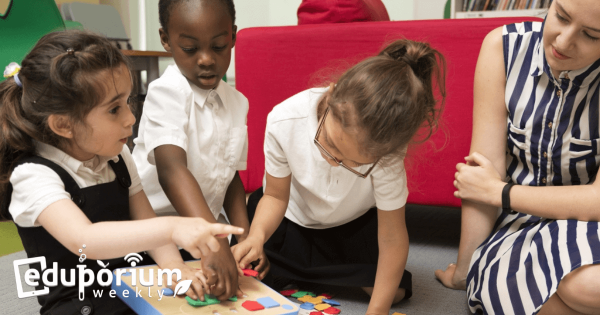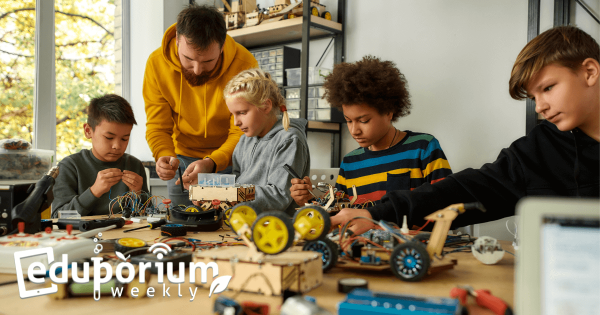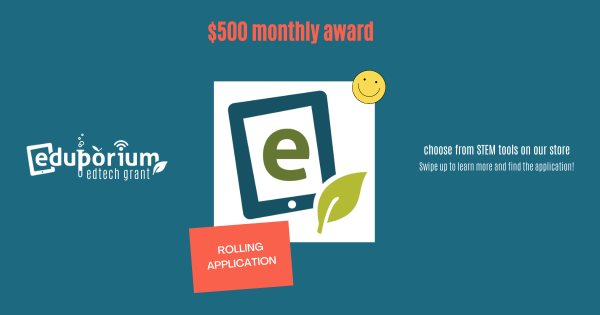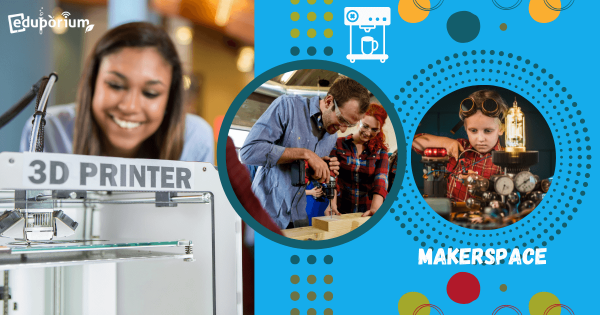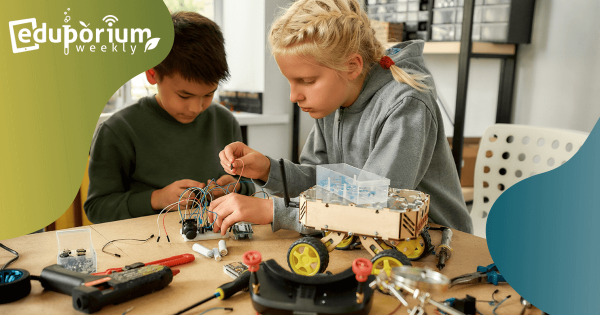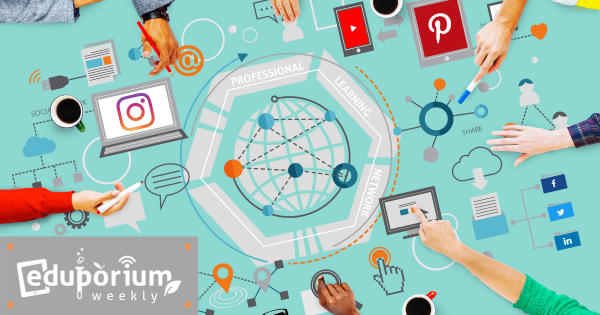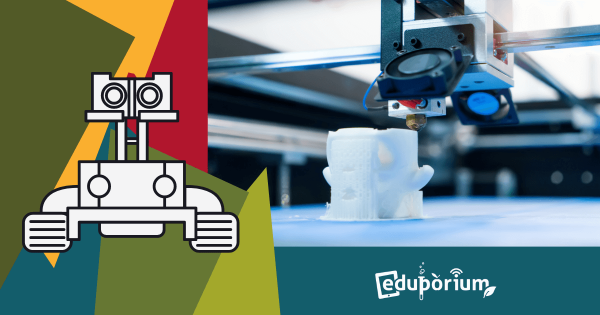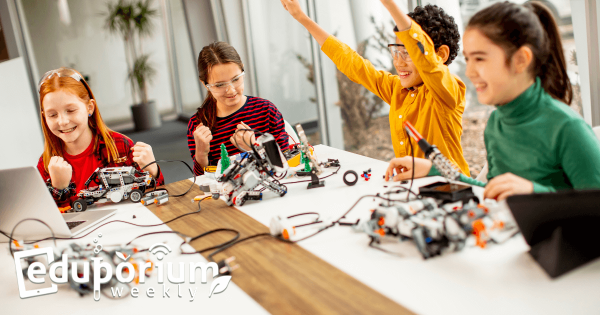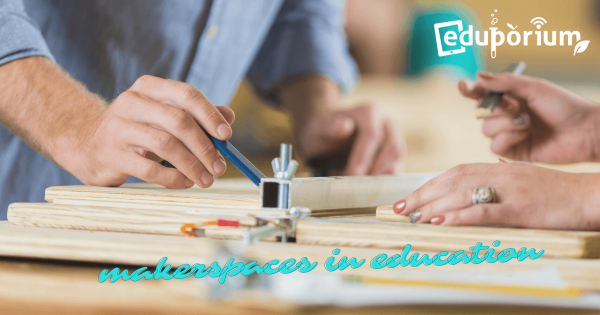Since they are so group-oriented, project-based learning experiences truly help students develop more than academic skills. They often learn to build up connections with their classmates, their communities, their teachers, or their work. And, this also helps kids learn to take greater pride in what they are doing, knowing they can positively impact others’ lives and their own.
Eduporium Weekly
Our longest running current blog series, the Eduporium Weekly is your source for relevant education topics. Whether it's related to EdTech, STEM, SEL, makerspaces, soft skills, equity, CTE, or any number of other things, you are sure to find some relevant content here. Our team remains committed to providing intriguing and up-to-date opinions and perspectives on the most important topics—whether they're technology-based or not. Every week, we share our thoughts about those key topics in education. Giving educators a Saturday morning read, many of our Eduporium Weekly posts reflect recent happenings, important updates, or, sometimes, some fun revelations. We're also very fortunate to serve a community of such committed educators. For that reason, we strive to keep our thoughts and content fresh. And, this section of our blog is a great place to go for just that.
Whatever is happening in education, we believe our committed team members help educators adjust. As we've seen, technology has a place in all types of learning—as long as educators integrate it strategically. As debates and discussions in STEAM and general education evolve, we adapt this content to continually educate, inform, and entertain. Our perspective may be a bit unique but our collective expertise on these topics is always improving. We also encourage you to browse the pages or search for a topic of your interest on the left of your screen. We certainly take pride in being up to date with what teachers are experiencing. From our entire team, we hope this content truly provides you with guidance and inspiration. Check back every weekend, as well, for the latest edition of the Eduporium Weekly.
-
Eduporium Weekly | EdTech Use In Early Education
We all know that today’s children have grown up using technology and that too many of these young kids log countless hours of simply playing games or streaming video content on their devices. Some say this is stunting their development while others say the stimulation is beneficial. Though there is truth to each, the education-focused content is most valuable in -
Eduporium Weekly | Creating Fun Afterschool STEM Learning
Afterschool STEM programs and camps have been around for many years, but they are sometimes entirely for child care purposes. Recently, however, we’ve seen shifts in more kids actually wanting to participate in enrichment programs to continue developing various STEM skills outside of the school day. And, the best part is they often truly enjoy these STEM experiences. -
Eduporium Weekly | Why Apply For Our EdTech Grant?
Chances are, if you’re any type of teacher these days, you hear the familiar word ‘grant’ thrown around quite a bit from friends, peers, or perhaps even administrators. Chances are, you may have even applied for a few of them, too. These days, it’s not uncommon for teachers to spend hours and hours of their free time perfecting applications and -
Eduporium Weekly | Elements Of Our Makerspace Consultation
Our maker experts are very well-versed in makerspace tools, technologies, budgets, and design—something that we have recently put extra effort into developing. So, whether educators already have a makerspace program at their school and are looking to expand on those offerings or need help with getting started, our makerspace team is ready to help you out! Here’s how. -
Eduporium Weekly | Technology, Equity, And Inclusion
Equity in modern learning involves much more than connectivity—although that’s a big piece of this puzzle. Disparities in reliable Internet access along with other inequities (as we constantly felt amid the pandemic) can expose inconsistencies in learning quality. On the other hand, firming up students’ digital safety (while serving their needs) also entails equity considerations. -
Eduporium Weekly | The Power Of The PLN
A professional learning network (a PLN) may traditionally consist of groups of colleagues or like-minded professionals who regularly communicate and collaborate (usually online) to help the members maximize their skill sets. A PLN in the education world involves teachers sharing resources, answering requests, or offering guidance and support while building relationships. -
Eduporium Weekly | The Best Characteristics Of EdTech
As EdTech tools evolve, their defining characteristics are often changing as well and, as we get further into the 21st century with a collectively stronger understanding of how to prepare our students for the future, those features keep improving. So, this week, we’re breaking down some of the very best things to look for as you vet any new educational -
Eduporium Weekly | Good STEM Enrichment Activities In Schools
STEM experiences can help children thrive in so many ways and teachers are always finding new ideas for improving them. One of the most popular options, of course, is through enrichment programs. The benefits of STEM learning are great but they’re often capped in the classroom, meaning that more school leaders are encouraging STEM participation outside school. -
Eduporium Weekly | Some Ideas For Values In Your Makerspace
Perhaps for the best, there’s no blueprint for creating a school makerspace but there are some strategies teachers could employ that might help to set theirs apart. Whether your makerspaces are big, tiny, stationary, mobile, or full of high- or low-tech tools, here are some of the coolest characteristics that the best makerspaces share—both physical features and attitudes.




